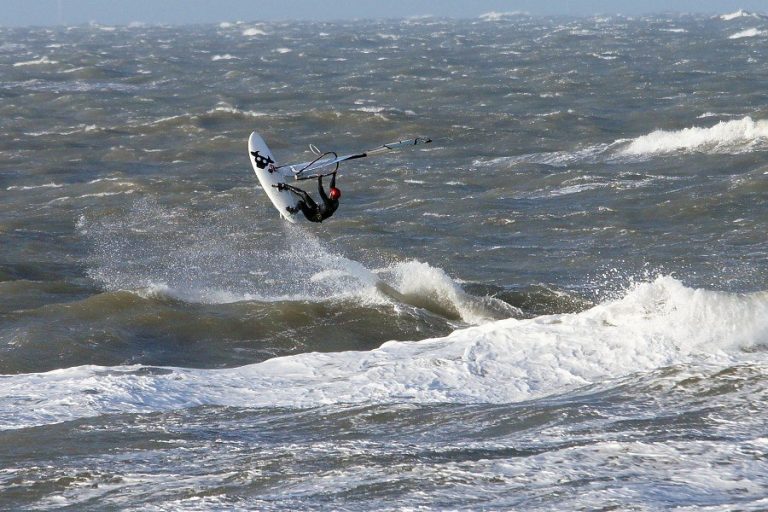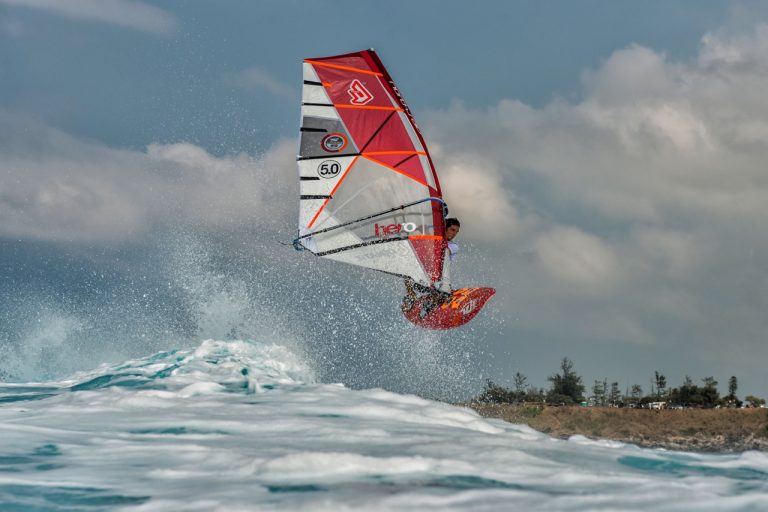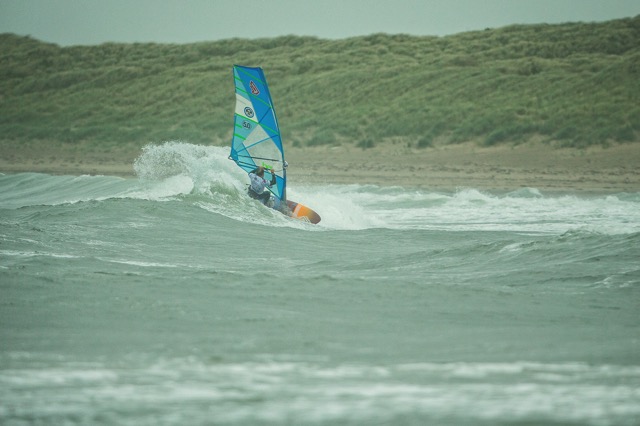We into the second in our technique series in conjunction with the Wave Hobbit, this time we look at getting to grips with a slalom gybe with the help of Kurosh Kiani.
Check out the first article, how to forward loop with Tonky Frans, right here.
CONTROL, BALANCE, COMMAND and DRIVE.
The gybe is the most complicated of moves and the hardest to be 100 percent. I tell people a good gybe, is a gybe you do not fall in the water. A perfect gybe, well, do we ever find it?
We are always finding ways to make it better.
The principle for the gybe is always the same, a wave board, maybe being the easiest and a Formula board being the hardest. I am discussing the slalom gybe as it is probably the most technical and they do have to adapt to various widths of board. Sometimes even changing between heats.
The first thing to remember is that the gybe is the sector in red, the rest is going into the gybe and coming out to your new course.
CONTROL.
You are coming into a gybe at full speed. In slalom you are driving hard to either stay in front or to catch up. So the first step is to bring your board under control and at the speed you
are comfortable to do the gybe. The speed you go into a gybe depends on many factors.
Sea state; chop, waves, going in or going out.
Traffic; people doing various different gybes, people crashing or in the water.
Style; tight in…… power out, power in…… tight out to close the door or just high speed round the outside.
BALANCE.
To do any move, everything must be in balance. First the body must be in balance with the various forces that will happen throughout the manoeuvre. The board/ sail and body must
go through many adjustments throughout the move. It just depends on which is giving the command.
COMMAND.
I have a principle, back foot command………… front foot drive. The sail and the board create drive through various parts of the turn, they will need commands to do this!
DRIVE.
Here in “A” the back foot is commanding the back corner of the board to dig in and cut a groove for the board to carve around the gybe. You can see in “B” by commanding the rig
forward, it brings the board level. Pulling you forward so the drive goes through the front foot.
If the command at the beginning was not enough, the board will be to flat. When you engage the drive, to much rail will go in the water forwards and the board will trip over. You can even get what I call reverse spin out, the tail slides into the turn. Not nice.
So what happens through the gybe and what must we look out for?
The entrance into the gybe is simple. Decide which angle enables you to be in control and balanced. Under powered you will be starting the gybe nearer to a reach and powering into to the turn with the rig. The more powered up you are the closer to the gybe angle.
Engaging your first command is all about placing the board at the correct angle. The back corner of the board must go deep into the water so it cuts that groove for you to carve around at full speed. How deep it goes will depend on how tight you wish to go and how much speed. The deeper it goes, the faster and tighter it will turn.
So with modern boards the tail is quite wide, the further back the back foot goes, the better but this produces a strange body position.
Remember your aim is to dig that back corner, so try not to lift with the front foot. This will only lift the rail and that back corner will not go into the water. The board will show so much area to the wind and go out of control.
In this example, low angle. Long radius?
The rig goes forward to drive you forwards, the board is slowing down so the apparent wind is moving back to the true wind direction. Power comes into the rig pulling you forwards, so creating drive through your front foot. It also creates a longer rail length, stabilising the turn angle.
If your back foot command was not enough at the beginning, it will create to much drive from the rig and you will need to stand up to hold that power.
Solution, you can bring the rig back. This brings your power back into the back triangle, giving pressure back to the back of the board. Zero drive forwards but control!
Note….. make sure your body angle is very forwards!!!!!!!!!!!!!!!
Now you are going to have to be very good!
Nothing is driving you forwards, so the nose of the board will go up as you change your feet.
Timing, getting power back in the sail and a fast rig change can save you.
Keeping the rig forwards through the turn, keeps the drive forwards, the nose down and you tend to stay lower. Staying in balance.
Think about this and see you back here with the next article!





